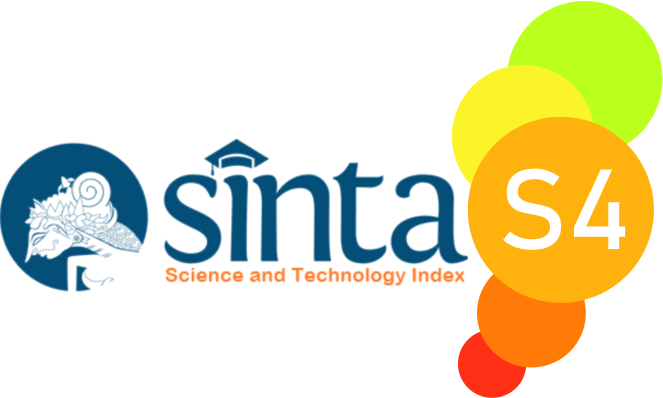Peer Interaction in Language Learning at SMAN 1 Galis Pamekasan
Abstract
This study is to finding out the ways teachers creating the peer interaction of students and the effect of the peer interaction of students on language learning at SMAN 1 Galis Pamekasan. This study facilitates the students having interaction and sharing their thought in English as well as it becomes beneficial input in language learning. This study is a qualitative research by using descriptive case study approach. This study describes in details the methods of the teachers promote student peer contact as well as the impact of student peer interaction on language acquisition. The participants of this study are the students and the teachers. Observation and interview are conducted to get the data of peer interaction and the influences of it in language learning. The results show that the way the teacher creates peer interacts with restricted English interaction and full English interaction. Peer Interaction in learning acts as an input in learning English and as a stimulus that can increase students' motivation to interact using English.
References
Amiruddin, M., & Jannah, U. R. (2022b). The role of speech style between teacher and student in learning English. 16(1). https://doi.org/10.11591/edulearn.v16i1.17787
Amiruddin, M., Jannah, U. R., & Sofia, S. (2020). Madurese Teacher’s Difficulties In Speaking. KABILAH : Journal of Social Community, 5(1), 60–73. https://doi.org/10.35127/kbl.v5i1.3965
Cahyani, N. M. D., Utami, N. M. V., & Juniartha, I. W. (2021). Types of speech style performed by the characters in birds of prey movie. Journal of Language and Applied Linguistics, 2(2), 139–148. https://doi.org/10.22334/traverse.v2i2.40
Ilmanuddin, I., & Siregar, R. S. (2019). Implementasi Metode Role Playing Pada Pembelajaran Tematik di Madrasah Ibtidaiyah Darul Ulum Sukorambi Jember Tahun Pelajaran 2018/2019. EDUCARE: Journal of Primary Education, 1(1), 17–30. https://doi.org/10.35719/educare.v1i1.5
Jannah, U. R., Nusantara, T., Sudirman, Sisworo, Yulianto, F. E., & Amiruddin, M. (2019). Student’s learning obstacles on mathematical understanding of a function: A case study in Indonesia higher education. TEM Journal, 8(4), 1409–1417. https://doi.org/10.18421/TEM84-44
Kartika, R., Rita, & Soraya, R. (2020). Pengaruh Produksi Ujaran Terhadap Pemerolehan Bahasa Pada Anak :Suatu Kajian Neuropsikolinguistik. Jurnal Pendidikan Bahasa Dan Sastra Indonesia, 6(2), 44–59.
Male, H. (2018). Foreign Language Learners’ Anxiety in Language Skills Learning: A Case study at Universitas Kristen Indonesia. JET (Journal of English Teaching), 4(3), 170. https://doi.org/10.33541/jet.v4i3.854
Nawas, A. (2020). Grading anxiety with self and peer-assessment: A mixed-method study in an indonesian efl context. Issues in Educational Research, 30(1), 224–244.
Puspasari, L., Serasi, R., & Lismayanti, D. (2021). Teachers ’ Language Style in Teaching and Learning English at Secondary Teachers ’ Language Style in Teaching and Learning English at Secondary School. September.
Sawaludin, Pammu, A., & Sahib, H. (2021). The Effects of Anxiety toward Listening Comprehension at University Level. International Journal of Innovative Science and Research Technology, 6(1).
Şenel, E. (2016). Foreign language anxiety of students studying English Language and Literature: A Sample from Turkey. Educational Research and Reviews, 11(6), 219–228. https://doi.org/10.5897/err2015.2507
Septiani, D., Saputra, Y., Abdullah, F., & Siliwangi, U. (2021). the Use of Target Language in a Classroom : Focusing on an Indonesian Efl Teacher. August.
Suendarti, M., & Virgana, V. (2022). Elevating natural science learning achievement : Cooperative learning and learning interest. 16(1), 114–120. https://doi.org/10.11591/edulearn.v16i1.20419
Winanta, A., Rochsantiningsih, D., & Supriyadi, S. (2020). Exploring EFL Classroom Interaction: An Analysis of Teacher Talk at Senior High School Level. ELS Journal on Interdisciplinary Studies in Humanities, 3(3), 328–343. https://doi.org/10.34050/elsjish.v3i3.11061
Yuan, R., & Hu, Y. (2018). Teachers’ views on the qualities of effective EFL teacher educators. ELT Journal, 72(2), 141–150. https://doi.org/10.1093/elt/ccx032
Yurtseven, N., & Akpur, U. (2018). Perfectionism, Anxiety and Procrastination as Predictors of EFL Academic Achievement: A Mixed Methods Study. Novitas-ROYAL (Research on Youth and Language), 12(2), 96–115.
Zheng, Y., & Cheng, L. (2018). How does anxiety influence language performance? From the perspectives of foreign language classroom anxiety and cognitive test anxiety. Language Testing in Asia, 8(1). https://doi.org/10.1186/s40468-018-0065-4
Zuhri, M. D., Amiruddin, M., & Rudiyanto, M. (2021). Improving Speaking Skill Through Instruction About Oral Classroom Participation in Madura University. Proceedings of the 1st UMGESHIC International Seminar on Health, Social Science and Humanities (UMGESHIC-ISHSSH 2020), 585, 68–73. https://doi.org/10.2991/assehr.k.211020.013
Copyright (c) 2022 Mohammad Amiruddin, Evha Nazalatus Sa'adiyah Sy, Muhammad Darin Zuhri

This work is licensed under a Creative Commons Attribution-ShareAlike 4.0 International License.

Journey: Journal of English Language and Pedagogy by http://ejurnal.budiutomomalang.ac.id/index.php/journey/index is licensed under a Creative Commons Attribution-ShareAlike 4.0 International License.






